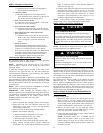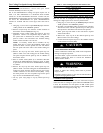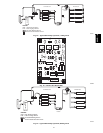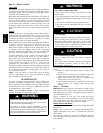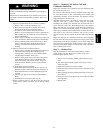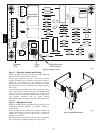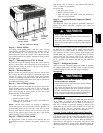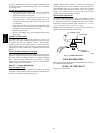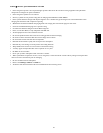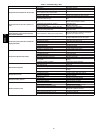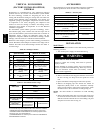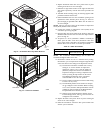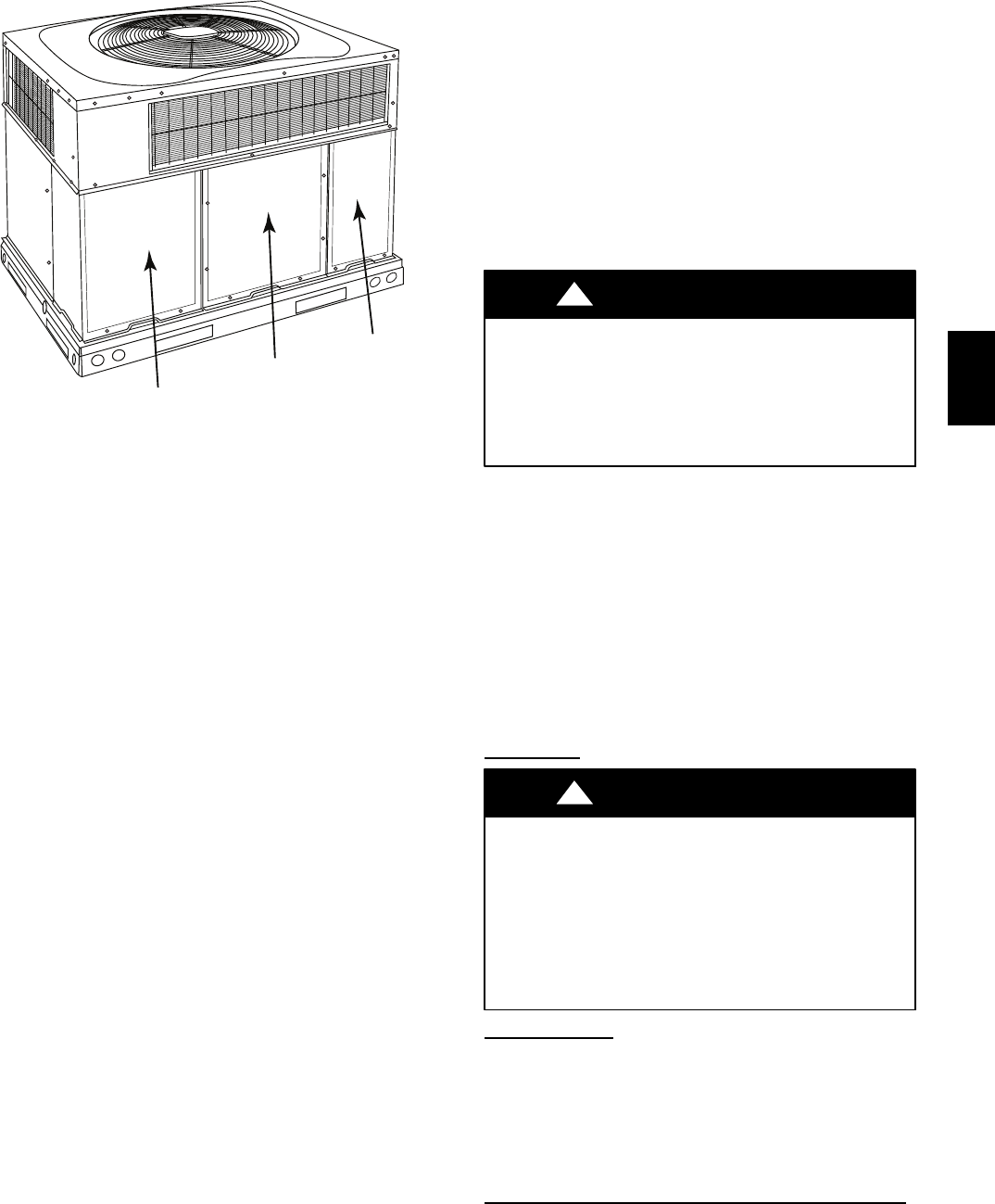
27
COMPRESSOR
ACCESS PANEL
BLOWER
ACCESS
PANEL
CONTROL
ACCESS
PANEL
A09207
Fig. 20 -- Unit Access Panels
Step 6 — Indoor Airflow
The heating and/or cooling airflow does not require checking
unless improper performance is suspected. If a problem exists, be
sure that all supply -- air and return--air grilles are open and free
from obstructions, and that the a ir filter is clean. When necessary ,
refer to Indoor Airflow and Airflow Adjustments section to check
the system airflow.
Step 7 — Metering Devices--TXV & Piston
This unit uses 2 types of metering devices. The outdoor metering
device is a fixed orifice and is contained in the brass hex-- body in
each liquid line feeding the outdoor coils. The indoor metering
device is a TXV type device.
Step 8 — Pr essure Switches
Pressure switches are protective devices wired into control circuit
(low voltage). They shut off compressor if abnormally high or low
pressures are present in the refrigeration circuit. These pressure
switches are specifically designed to operate with Puron (R--410A)
systems. R--22 pressure switches must not be used as replacements
for the Puron (R--410A) system.
Step 9 — Loss of Charge Switch
This switch is located on the liquid line and protects against low
suction pressures caused by such events as loss of charge, low
airflow across indoor coil, dirty filters, etc. It opens on a pressure
drop at about 20 psig. If system pressure is above this, switch
should be closed. To check switch:
1. Turn off all power to unit.
2. Disconnect leads on switch.
3. Apply ohm meter leads across switch. You should have
continuity on a good switch.
NOTE: Because these switches are attached to refrigeration
system under pressure, it is not advisable to remove this device for
troubleshooting unless you are reasonably certain that a problem
exists. If switch must be removed, remove and recover all system
charge so that pressure gauges read 0 psi. Never open system
without breaking vacuum with dry nitrogen.
Step 10 — High-- Pressure Switch
The high--pressure switch is located in the discharge line and
protects against excessive condenser coil pressure. It opens at 650
psig.
High pressure may be caused by a dirty outdoor coil, failed fan
motor, or outdoor air recirculation.
To check switch:
1. Turn off all power to unit.
2. Disconnect leads on switch.
3. Apply ohm meter leads across switch. You should have
continuity on a good switch.
Step 11 — Copeland Scroll Compressor (Puron
Refrigerant)
The compressor used in this product is specifically designed to
operate with Puron (R--410A) refrigerant and cannot be
interchanged.
EXPLOSION HAZARD
Failureto follow thiswarning couldresult in personalinjury,
death or property damage.
Wear safety glasses and gloves when handling refrigerants.
Keep torchesand otherignitionsourcesaway fromrefrigerant
and oils.
!
WARNING
The scroll compressor pumps refrigerant throughout the system by
the interaction of a stationary and an orbiting scroll. The s croll
compressor has no dynamic suction or discharge valves, and it is
more tolerant of stresses caused by debris, liquid slugging, and
flooded starts. The compressor is equipped with an internal
pressure relief port. The pressure relief port is a safety device,
designed to protect against extreme high pressure. The relief port
has an operating range between 550 and 625 psig differential
pressure.
Step 12 — Refrigerant System
This step covers the refrigerant system of the 604D----A, including
the compressor oil needed, servicing systems on roofs containing
synthetic materials, the filter drier and refrigerant charging.
Refrigerant
PROPERTY HAZARD, PERSONAL INJURY OR
ENVIRONMENTAL HAZARD
Failuretofollowthiswarningcouldresultin propertydamage
or personal injury or death.
This system uses Puron (R--410A) refrigerant which has
higher operating pressures than R --22 and other refrigerants.
No other refrigerant may be used in this system. Gauge set,
hoses,andrecoverysystemmustbedesignedtohandlePuron.
If you are unsure consult the equipment manufacturer.
!
WARNING
Compressor Oil
The Copeland scroll compressor uses 3MAF POE oil. If additional
oil is needed, use Uniqema RL32--3MAF. If this oil is not
available, use Copeland Ultra 32 CC or Mobil Arctic EAL22 CC.
This oil is extremely hygroscopic, meaning it absorbs water
readily. POE oils can absorb 15 times as much water as other oils
designed to HCFC and CFC refrigerants. Take all necessary
precautions to avoid exposure of the oil to the atmosphere.
Servicing Systems on Roofs with Synthetic Materials
POE (polyolester) compressor lubricants are known to cause long
term damage to some synthetic roofing materials. Exposure, even if
immediately cleaned up, may cause embrittlement (leading to
cracking) to occur in one year or more. When performing any
service that may risk exposure of compressor oil to the roof, take
appropriate precautions to protect roofing. Procedures w hich risk
oil leakage include, but are not limited to, compressor replacement,
604D-- --A



